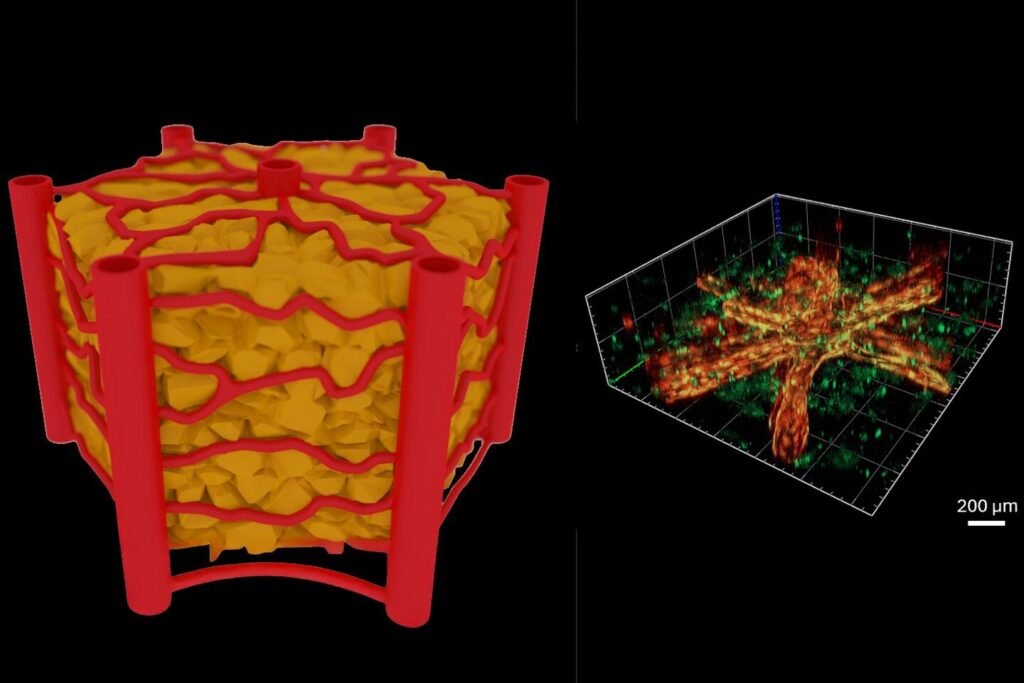The field of biomedical research is constantly evolving, with new technologies and methodologies being developed to enhance our understanding of human health and disease. One such advancement is the development of organs-on-a-chip, also known as microphysiological systems. These systems allow researchers to cultivate tissue structures in controlled microfluidic chips, providing a more accurate and reliable platform for studying the effects of drugs and the interactions between different organs.
However, a major limitation in the development of these mini-organs has been the absence of blood vessels. In order to create more realistic and functional models, it is crucial to incorporate a network of perfusable blood vessels and capillaries. Researchers at TU Wien have now overcome this obstacle by using ultrashort laser pulses to create tiny blood vessels within hydrogels. These vessels closely mimic the structure and function of natural blood vessels, allowing for more accurate and reproducible experiments.
The key to success lies in the precision and stability of the artificial blood vessels. By utilizing advanced laser technology, the researchers are able to create highly precise 3D structures within the hydrogels, ensuring that the vessels remain stable and open when populated with living cells. This breakthrough not only enables the creation of artificial blood vessels that can be perfused, but also establishes a scalable technology that can be used on an industrial scale.
In addition to creating artificial blood vessels, the researchers have also successfully developed liver lobules on a chip. By incorporating a controlled 3D vascular network within the liver model, the team was able to replicate the dense and intricate microvasculature of the liver. This advancement has the potential to revolutionize preclinical drug discovery by providing more reliable models for studying liver function and response to drugs.
Overall, the integration of Organ-on-a-chip technology and advanced laser technology represents a significant step forward in biomedical research. These models not only allow for the realistic simulation of biological processes on a chip, but also provide valuable insights into how the body works at a cellular level. With further development and refinement, these technologies have the potential to revolutionize healthcare and lead to the development of more effective treatments in the future.


